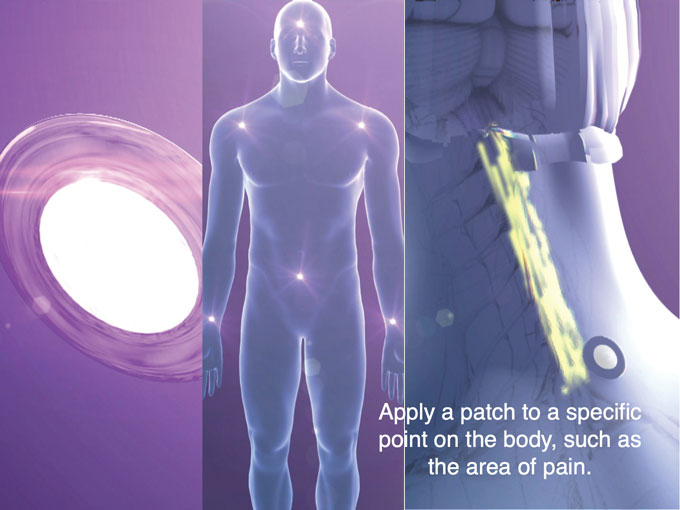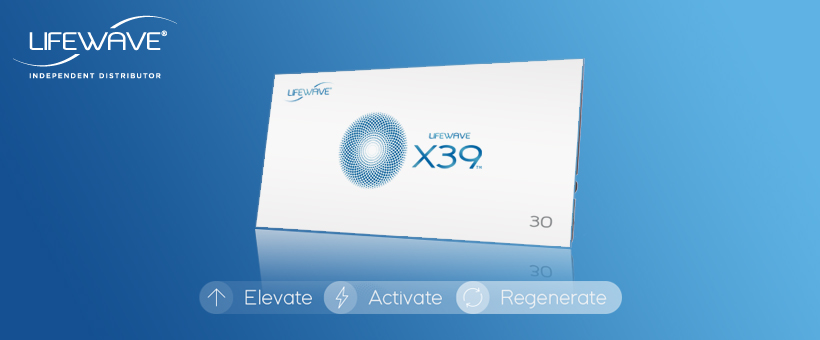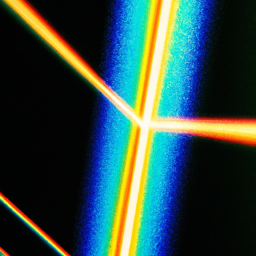In this article, you will discover the remarkable healing abilities of infrared light when it comes to aiding in wound recovery. From superficial cuts to more severe injuries, the use of infrared light therapy has shown promising results in accelerating the healing process. Learn how this non-invasive treatment works and how it can potentially benefit your own healing journey.
I. What is Infrared Light?
A. Definition of Infrared Light
Infrared light refers to the portion of the electromagnetic spectrum that lies just beyond the visible red light. It has longer wavelengths than visible light, which enables it to penetrate deeper into the body tissues. Infrared light is commonly divided into three categories: near-infrared (NIR), mid-infrared (MIR), and far-infrared (FIR). Each category has different therapeutic properties and applications, but all of them share the ability to interact with the body’s cells and tissues to promote healing.
B. Properties of Infrared Light
Infrared light possesses several unique properties that make it an effective therapy for wound healing. Firstly, it is non-invasive, meaning it can penetrate the skin without causing any harm or discomfort. Secondly, it is capable of generating heat when absorbed by the body, which helps in increasing circulation and promoting cellular metabolism. Additionally, infrared light has been found to stimulate the production of collagen, a crucial protein in the wound healing process. These properties, combined with its ability to penetrate deeply, make infrared light a promising therapy for wound recovery.
II. Understanding Wound Recovery
A. Types of Wounds
Wounds can be classified into various types based on their cause and severity. Some common types of wounds include:
- Abrasions: Superficial wounds caused by the scraping or rubbing of the skin surface.
- Lacerations: Deep cuts or tears in the skin, often caused by sharp objects or accidents.
- Burns: Tissue damage resulting from exposure to heat, chemicals, electricity, or radiation.
- Pressure ulcers: Also known as bedsores, these wounds develop due to sustained pressure on a particular area, often seen in individuals with limited mobility.
B. Stages of Wound Healing Process
The wound healing process can be divided into four distinct stages:
- Hemostasis: The immediate response to injury, characterized by blood clotting to stop bleeding.
- Inflammation: The body’s immune response to remove bacteria and debris from the wound.
- Proliferation: The formation of new tissue, including the growth of blood vessels and collagen production.
- Remodeling: The final stage where the newly formed tissue undergoes maturation and strengthening.
Understanding the types of wounds and the stages of wound healing is crucial as it helps determine the appropriate interventions and therapies, such as infrared light therapy.
III. Mechanism of Infrared Light Therapy
A. How Infrared Light interacts with the Body?
When infrared light is applied to the body, it is absorbed by the skin and underlying tissues. The energy from the light is then converted into heat, which triggers various physiological responses. Infrared light penetrates the skin and can reach deep tissues such as muscles, tendons, and even bones. This deep penetration allows the light to stimulate cellular activity and promote healing at a molecular level. The heat generated by infrared light also helps to improve blood flow and oxygenation, providing essential nutrients for the healing process.
B. Benefits of Infrared Light Therapy
Infrared light therapy offers a multitude of benefits for wound recovery. Some key advantages include:
- Pain Relief: Infrared light can help alleviate pain by reducing inflammation and stimulating the release of endorphins, natural pain-relieving chemicals.
- Increased Circulation and Oxygenation: The heat generated by infrared light dilates blood vessels, improving blood flow and oxygen delivery to the wound site.
- Enhanced Cell Activity: Infrared light can stimulate cellular metabolism and the production of ATP (adenosine triphosphate), the basic unit of energy in cells.
- Accelerated Tissue Regeneration: By boosting collagen production and promoting cell growth, infrared light therapy can accelerate the healing of wounds, resulting in faster recovery times.
IV. Effects of Infrared Light on Wound Healing
A. Increased Circulation and Oxygenation
One of the primary effects of infrared light therapy on wound healing is its ability to increase circulation and oxygenation. The heat generated by the light causes blood vessels to expand, improving blood flow to the wound site. This increased circulation brings in more oxygen and essential nutrients, which are vital for the repair and regeneration of damaged tissues. Improved oxygenation also helps remove waste products and toxins from the area, promoting a healthier healing environment.
B. Enhanced Cell Activity
Infrared light therapy stimulates cellular activity by enhancing the production of ATP, the energy currency of cells. ATP powers various cellular processes, including the synthesis of proteins like collagen. Collagen is a critical component of the extracellular matrix, providing structural support for tissues and facilitating wound closure. By accelerating collagen production, infrared light therapy promotes the formation of new tissue, leading to faster wound healing.
C. Accelerated Tissue Regeneration
By increasing circulation, promoting cellular activity, and stimulating collagen production, infrared light therapy plays a vital role in accelerating tissue regeneration. The therapy helps rebuild damaged tissues, restoring their functionality and integrity. Infrared light also helps reduce scar formation by promoting the growth of healthier, more organized collagen fibers. This not only enhances the aesthetic appearance of the healed wound but also improves its strength and flexibility.
V. Scientific Evidence Supporting Infrared Light Therapy
A. Research Studies on Infrared Light and Wound Healing
Numerous research studies have been conducted to investigate the efficacy of infrared light therapy in wound healing. These studies have demonstrated positive outcomes, showing that infrared light therapy can significantly enhance the healing process. For example, a study published in the Journal of Clinical Laser Medicine and Surgery found that infrared light therapy increased wound healing rates in diabetic foot ulcers. Another study published in the International Wound Journal showed that infrared light therapy improved wound healing outcomes in patients with venous leg ulcers.
B. Experiments on Animal Models
In addition to human studies, experiments on animal models have provided further evidence of the therapeutic effects of infrared light therapy on wound healing. Animal studies have consistently shown that infrared light therapy can accelerate wound closure, reduce inflammation, and promote tissue regeneration. For instance, a study conducted on rats and published in the Journal of Photochemistry and Photobiology demonstrated that infrared light therapy significantly increased the rate of wound healing compared to the control group.
C. Clinical Trials on Human Subjects
Clinical trials involving human subjects have also supported the efficacy of infrared light therapy in wound recovery. These trials have evaluated the therapy’s effects on various types of wounds, including surgical incisions, burns, and pressure ulcers. The results consistently show that infrared light therapy can improve wound healing outcomes, reduce pain, and enhance patient comfort. For instance, a randomized controlled trial published in the Archives of Physical Medicine and Rehabilitation reported that infrared light therapy improved wound healing and reduced pain in post-surgical patients.
VI. Applications of Infrared Light Therapy
A. Treatment of Chronic Wounds
Chronic wounds, such as diabetic ulcers and pressure ulcers, often present a challenge in the healing process. Infrared light therapy has shown promise in the treatment of these challenging wounds. The therapy helps stimulate blood flow and cellular activity, which are crucial for breaking the cycle of delayed wound healing. By enhancing tissue regeneration and reducing inflammation, infrared light therapy can promote the healing of chronic wounds, leading to improved patient outcomes.
B. Post-Surgical Wound Care
Post-surgical wounds require appropriate care and management to ensure optimal healing. Infrared light therapy can be a valuable adjunctive treatment for post-surgical wound care. The therapy can help reduce pain, inflammation, and the risk of infection, leading to faster healing and reduced complications. Additionally, infrared light therapy promotes the formation of stronger and more cosmetically appealing scars, improving the overall outcome of the surgical procedure.
C. Diabetic Ulcer Management
Diabetic foot ulcers are a common and serious complication of diabetes, often resulting from poor circulation and nerve damage. Infrared light therapy has been found to be effective in managing diabetic ulcers by improving blood flow, accelerating wound healing, and reducing the risk of infection. The therapy can also help alleviate pain associated with diabetic ulcers, improving the quality of life for diabetic patients.
VII. Precautions and Safety Considerations
A. Proper Use and Dosage of Infrared Light
While infrared light therapy offers numerous benefits, it is essential to use the therapy correctly and adhere to recommended dosages. The intensity and duration of treatment should be determined by healthcare professionals with expertise in infrared light therapy. Improper use or excessive exposure to infrared light may lead to adverse effects, such as skin burns or tissue damage.
B. Potential Side Effects and Risks
In general, infrared light therapy is considered safe and well-tolerated. However, some individuals may experience minor side effects, including temporary skin redness or sensitivity. It is crucial to consult with a healthcare professional before undergoing infrared light therapy, especially for individuals with pre-existing skin conditions or photosensitivity disorders. Pregnant women and individuals with certain medical conditions, such as epilepsy or active cancer, should also exercise caution and seek medical advice before starting infrared light therapy.
VIII. Comparison with Other Wound Healing Methods
A. Infrared Light vs. Traditional Dressings
Comparing infrared light therapy with traditional wound dressings reveals distinct advantages offered by each method. While traditional dressings provide physical protection and aid in wound moisture regulation, infrared light therapy offers deeper penetration into tissues, promoting cellular activity and circulation. Infrared light therapy can be used in conjunction with traditional dressings to enhance healing outcomes, combining the benefits of both approaches.
B. Infrared Light vs. Hyperbaric Oxygen Therapy
Hyperbaric oxygen therapy (HBOT) involves exposing the body to high levels of oxygen to promote wound healing. While both infrared light therapy and HBOT have shown positive results, they differ in their mechanisms of action. Infrared light therapy primarily works by enhancing cellular metabolism and tissue regeneration, while HBOT increases oxygen concentration in the tissues. Depending on the specific wound characteristics and patient factors, healthcare professionals can choose the most suitable therapy or even combine both approaches for optimal results.
IX. Availability and Accessibility of Infrared Light Therapy
A. Medical Facilities and Professionals Offering Infrared Light Therapy
Infrared light therapy is increasingly available in various medical facilities, including hospitals, wound care centers, and rehabilitation clinics. Healthcare professionals, such as dermatologists and physical therapists, are trained to administer infrared light therapy effectively. Seeking treatment from certified professionals ensures the therapy is performed safely and in accordance with best practices.
B. Home Use Devices and DIY Options
For individuals who prefer the convenience of home-based treatments, there are FDA-approved infrared light therapy devices available for personal use. These devices are designed to be user-friendly and provide a convenient option for individuals seeking to incorporate infrared light therapy into their wound healing regimen. However, it is recommended to consult with a healthcare professional before purchasing and using home-based infrared light therapy devices to ensure proper usage and mitigate any potential risks.
X. Future Directions of Infrared Light Therapy
A. Ongoing Research and Innovations in Infrared Light Technology
As technology continues to evolve, ongoing research is exploring innovative ways to enhance the efficacy of infrared light therapy. Scientists are investigating the potential of using infrared light in combination with other wavelengths or therapeutic agents to further optimize wound healing outcomes. Additionally, advancements in wearable devices and laser technology hold promising potential for the development of more user-friendly and accessible infrared light therapy options.
B. Potential Integrations with Other Treatment Modalities
Infrared light therapy has already shown significant potential when used in combination with other treatment modalities. Integrative approaches, such as combining infrared light therapy with negative pressure wound therapy or advanced dressings, have achieved synergistic effects, resulting in improved wound healing outcomes. Further exploration and clinical studies are necessary to uncover the full potential of integrating infrared light therapy with other existing and emerging wound healing techniques.
In conclusion, infrared light therapy holds great promise as a non-invasive and effective treatment for wound recovery. Its ability to increase circulation, enhance cellular activity, and accelerate tissue regeneration has been supported by scientific evidence. From treating chronic wounds to improving post-surgical wound care and managing diabetic ulcers, infrared light therapy offers a versatile and beneficial approach to wound healing. As research and technological advancements continue, the future of infrared light therapy looks promising, opening up new possibilities for the integration of this therapy with other treatment modalities to further optimize patient outcomes.





